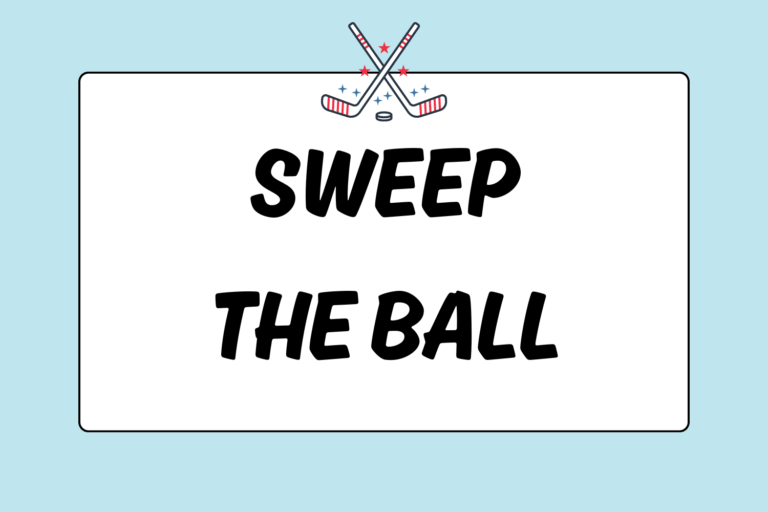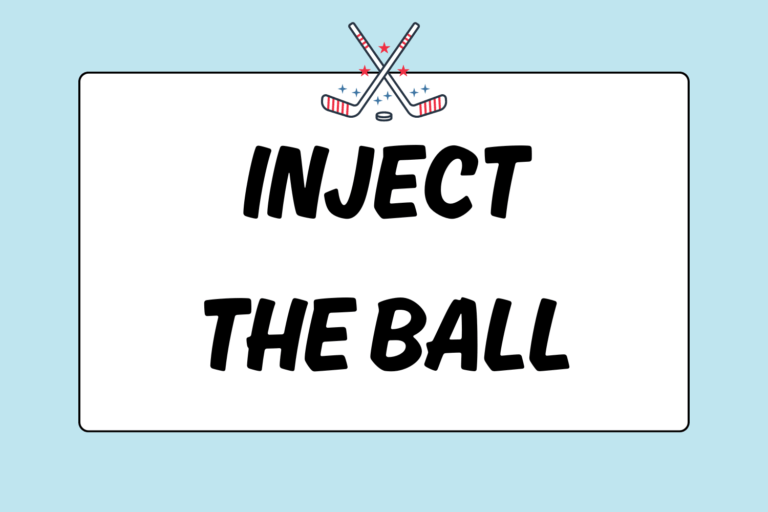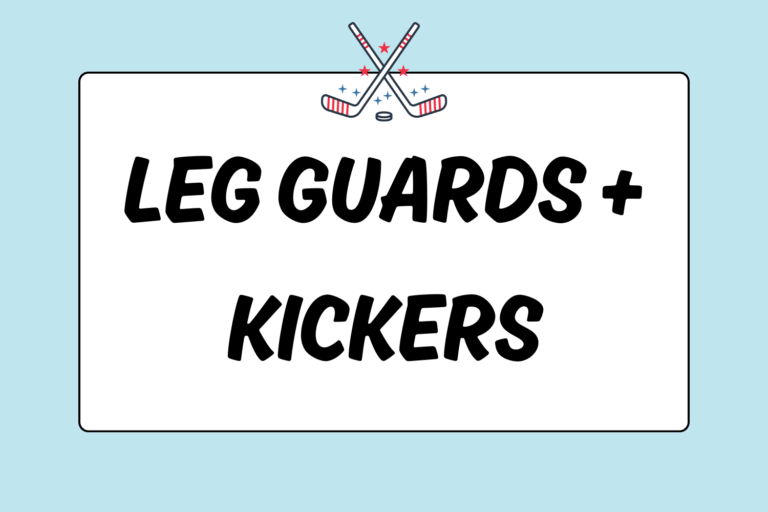A penalty corner — also referred to as a “short corner” or just “a short” — puts the defense in a dangerous situation because they are outnumbered by almost double the amount of offensive players. Therefore, strategy is very important in stopping the opposing team from scoring. Preventing a penalty corner is the defense’s overall goal, but if a penalty corner is called, being prepared will give the defense an advantage.
During a penalty corner, the defense’s main goal is to hold off the opponent’s offense until the rest of their team can run back from the 50-yard center line to help defend the goal. (Once a penalty corner is called, only five defensive players, goalie include, are allowed to stay in the goal).This guide will teach you the basic positions and setup of a defensive penalty corner, while also detailing the specific role of each player during the short.
What is a Penalty Corner?
A penalty corner is awarded to the offensive team when the defensive team breaks certain rules inside the shooting circle. Short corners are also awarded when a defensive player commits an intentional foul inside the circle or within the 25-yard (23 meters) area. The most common fouls that result in penalty corners are foot fouls and high balls.
Once a penalty corner is called, play is stopped to allow time both teams to set up their respective attack and defense positions. The defensive team is allowed five defenders, including the goalie, on the goal line. All five defenders must stand behind the goal line (end line) and within the five-yard marks outside the goal (they’ll generally be inside the goal). Their sticks cannot cross the goal line. The rest of the team must sprint back toward the middle of the field and stand behind the 50-yard line. They may not cross the line until the ball is put into play.
On the shooting circle, the most important offensive players that the defenders need to focus on are the hitter and stopper (positioned at the top of the circle), and the “injector” who starts on the end line, 11 yards away from the goal. The injector starts with the ball and pushes the ball out to the stopper, who then stops the ball for the hitter. Once the ball is pushed, the defenders may rush the ball while the rest of their teammates sprint down the field to help protect their goal. And then, the battle begins.
For more information on the setup of an offensive penalty corner, check out our guide, Offensive Penalty Corners in Field Hockey.
The Defensive Setup
The setup of a defensive short corner has fewer variations than an offensive short corner. Four defensive players and their goalie stand in the goal and behind the end line. All five players prepare to fulfill their duties once the injector delivers the ball to the top of the circle. These five players’ positions are:
- Goalie: The goalie generally positions herself in the middle of the goal.
- Rusher: The rusher is usually positioned to the immediate left of the goalie. When the ball is delivered by the injector, the rusher will sprint to cover the hitter.
- Right trail: The right trailer is usually positioned to the immediate right of the goalie. Once the rusher sprints toward the hitter, the trailer follows and picks up any passes to the right and covers the right post.
- Left trail: The left trailer is positioned to the left of the rusher and covers the pass to the top left of the circle.
- Left post: The left post positions herself behind the left trail for the initial hit. After the ball is put into play, she guards the post against any deflections or stray players.
Now, the rusher is not the only player to be in a rush to cover the ball. This defensive play is fast — every player needs to get to their respective positions immediately. Again, this setup is only one example — a defensive team can also have two players on each side of the goalie.
Goalie
The goalie is the most important player in the short corner. Once the ball is delivered to the offensive hitter, the goalie will generally step out from the end line, generally about five feet, to reduce the shooting angle of the initial shot. After the initial shot, the goalie will return to the goal line to defend against any deflections or rebounds. The goalie’s job is to clear the ball out of the circle and prevent the other team from scoring.
Hot Tip: Be Aware of Your Angle
While goalkeeping, be aware of your angle. Your main goal is to play smart and stay controlled in your movements. For the initial shot, you can step out of the goal. But for secondary shots or if it starts to get crowded in front of the goal, get back to the goal line and get ready to block the shots.
Rusher
The rusher is one of the fastest sprinters on the team — and she will be doing plenty of sprints during short corners as the first line of defense against the initial shots. Once the injector hits the ball to the top of the circle, the rusher will sprint toward the shooter to block the first shot.
To rush, hold the stick with only your right hand, either at the top of the stick or midway down the handle. Where you hold the stick depends on personal comfort, but make sure to keep it to the right side if your body. Keep your stick on the ground for the entire run. By doing this, you can stop any shot hit in your path. Also, sprint to the left side of the offensive hitter. This ensures that your stick — not your body — will be blocking the ball’s path. This is good to remember for preventing injury.
Trailers
The trailers serve as the second line of defense against the initial shot. The left trail follows the rusher out of the goal. She trails slightly to the left of the rusher so that she can cover the middle area of the shooting circle. By positioning herself like this, the left trail will be able to pick up any passes that get past the rusher (this is her main job). The right trail stays to the right of the rusher. She does not come out as far as the left trail, and her duty is to cover the right side of the goal. The right side includes the post, the area in front of the goalie, and any player running towards the goal. Both trails needs to stay light on their feet and unlike the rusher, they should keep both hands on the stick for better control of their stops.
Post Guard
This player guards the left post (the “back post”). After the initial delivery, she supports the goalie by coming out of the goal to guard any offensive players around the back post. As a post guard, it’s important to never stand inside the goal or use your body to block shots — a post guard is not padded like the goalie, so it’s dangerous to play as one.
Center Line
The remaining defensive players who are not part of the short corner wait at the 50-yard center line in the middle of the field. These players poise ready to sprint and defend as soon as the injector hits the ball. These players must sprint. Their teammates in the short corner will be outnumbered until they get there. When they enter the circle, they’ll choose a specific player to mark, and they should always be goal-side or ball-side against their marks. By doing so, they’ll prevent shots on goal.
Clearing the Ball
After you gain control of the ball, work to keep it! Never cross the ball in front of the goal. Always dribble it out of the circle or hit it towards the sidelines — this is the least dangerous way to clear the ball. If you cross the ball in front of your goal, you’ll have numerous attackers waiting at the top to intercept your cross, or to take a shot as the ball passes by. If you dribble the ball out of the circle, once you get closer to the sideline drive the ball up the field to get the ball away from the goal.
Play as One Unit
After a teammate hits the ball up the field, support her. Your team should move as one unit. When the ball is in your defensive zone, everyone should be playing defense. When the ball is in the offensive zone, everyone should now be playing offensive and supporting the forwards. By doing this, you will always have player-advantage over your opponents.
Stay Strong
The best advice for defending against a short corner is to have a plan and stick to it. Be confident in your positioning. The offense will try to distract you by running in every direction to block your goalie’s vision. Don’t let this affect your game. Stay calm and hold the offense off until your reinforcements get there. And again, remember to send the ball to the sides, not across your goal.





